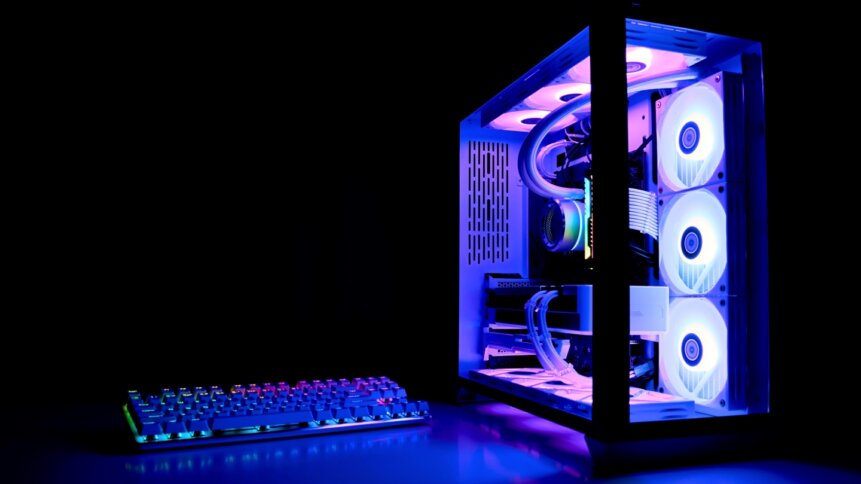Industry can learn from computer gaming wins

|
Getting your Trinity Audio player ready...
|
Computer gaming is big business with revenues topping the entertainment charts. The sector represents a huge pool of talent that’s grown to be larger than Hollywood. And the good news for companies, of all types, is that many of the features that make a compelling game are transferable to other products and services too.
Successful gaming titles will hit all of the so-called ‘three e’s’ – the need to ‘educate, entertain and engage’. But there are many more traits engineered into gameplay that could help businesses to improve their offerings. At the same time, computer gaming is often misunderstood and can attract concerns that are unwarranted.
Clear benefits
For example, one of the talking points is whether violent games create violent people. But that takes attention away from some of the clear benefits. “Children who play games are more dextrous and agile,” Nicky Danino, Principal Lecturer at the University of Central Lancashire, told TechHQ. And naturally, there are many teaching points for adults too.
Computer games are an opportunity to develop a range of skills and can be much more sociable than non-gamers may realize. “You need to differentiate between screen time and game time,” Danino points out. Breakthrough titles such as Nintendo’s Wii Fit, were revolutionary in attracting players of all ages – many of whom had never owned a console before.
Certainly, the active elements of the Wii Fit experience – where players use controllers and balance board peripherals to play sports and exercise within a computer gaming environment – have given health tech developers an abundance of inspiration. Games can motivate positive changes in behavior – an idea that Apple and other developers in the smartwatch sector are exploring with health apps.
Data insights
Encouraging device owners to be more active is important, but being able to monitor changes over time is significant too. Returning to Nintendo’s balance board, changes in gait and posture can be indicative of injury or declining health. Data could provide early signs of arthritis or even cognitive impairment arising from types of dementia such as Alzheimer’s disease. And, at the very least, insights could nudge individuals to arrange a medical check-up.
The ability of computer games to tap into human behavior is certainly something that industry can learn from – for example, appealing to a player’s desire to complete a collection. Humans are programmed to seek out rewards, but translating successes from games into other scenarios requires finesse. “Businesses can adopt those strategies, but they will only work if the context is right,” said Danino. Scenarios need to appeal to customers and be understandable and relevant.
One of Danino’s research themes is looking at how people learn and what types of information are most helpful. In computer science – her own field of study – she observes that students can sometimes hit a wall when learning to program. And, if things don’t make sense, learners may consider dropping out of their courses. To tackle the issue, Danino’s team is developing algorithms that enable users to program computers using a mental model tailored to the individual.
Leaderboard potential
Leaderboards too, can be useful in keeping students engaged, recognizing the competitive side that’s present in our personalities. And there’s huge potential here for training providers to build on. Duolingo –a language learning app – encourages regular participation by placing learners on weekly leaderboards.
Duolingo also leverages habit-building research on the power of ‘the streak’. The streak – the number of days in a row that a user has completed at least one lesson – is a badge of honor for Duolingo users, who regularly share their progress on social media. Consistency is a marker of success in language learning, and streaks help to reinforce a daily routine.
Another useful mechanism, widespread in computer gaming, is personalization. “Gamers love personalization,” Danino points out. The passion for creating custom characters and in-game assets is a common thread in successful titles. Minecraft – purchased by Microsoft for $2.5 billion back in 2014 – is a good example.
In industry, personalization can breathe new life into a product line and dramatically boost customer appeal. The reboot of the Fiat 500, re-introduced in 2007 (50 years after the original car made its debut) was a big hit thanks to the wide range of colors and combinations that were available. And advances in printing and shaping technologies are allowing companies to provide customers with bespoke options on a much larger scale.
The prospects for applying computer gaming know-how across other technical fields are strong. The UK’s National Cyber Security Centre recognized an opportunity to bolster the country’s defenses in 2021 by launching an online game dubbed ‘CyberSprinters’. Designed to teach players how to stay secure online, it’s just one of many examples where computer gaming’s appeal can have real-world benefits.
As a training ground, computer games developers are a rich source of talent, not just for companies seeking software engineers. The games industry is massive, with space for all kinds of skills including artists and the wide range of roles required to build digital worlds. This computer modeling expertise transfers directly across into industrial fields such as digital twins.
In the future, it will be no surprise to see business software and services continue to borrow from the successful world of computer gaming.










